In celebration of Superior Spider-Man’s “Goblin Nation” arc, over the next two months, I’m going to acknowledge what I consider to be the 10 best Green Goblin/Spider-Man storylines. I’m creating this list based on a full array of arbitrary, unscientific criteria: namely historical significance, artwork, creativity and my overall enjoyment of the story. I’ll run at least one entry a week until we reach my number one choice.
Here’s #7:
7. “The Crime-Master vs. the Green Goblin” – Amazing Spider-Man #26-27 (published July-August 1965): script by Stan Lee, plots and pencils by Steve Ditko
A true highlight of the latter half of the Stan Lee/Steve Ditko-era of ASM, the two-part Crime-Master/Green Goblin arc incorporates a number of very important storylines and thematic ideas that went on to play a key role in the development of Spider-Man’s world: most notably, the mystery of the Green Goblin’s identity (and how that mystery shaped the character as one of Marvel’s all-time great villains); and the Spider-Man is a “street-level” crime fighter narrative, that has varied in consistency depending on the creative team, but is still considered a core part of the Spider-verse.
To the first point, while a very sound argument could be made that Doctor Octopus was/is Spider-Man’s arch-foe, in my opinion, the fact that Lee and Ditko bestowed the Goblin with a long-running “mystery” elevates him above our good friend Otto Octavius. Doc Ock might have had some of the meatier stories (“If This Be My Destiny/Master Planner”), and was the alpha dog of the Sinister Six, but the Green Goblin’s secret made his appearances come across like a legitimate “event,” dating back to his very first appearance in ASM #14. He was the only Spider-Man villain who had this secret, and when it became abundantly clear that Lee or Ditko had no intention of revealing his true identity after his first couple of stories, it made the character even more intriguing and special.
The character’s mystery would go on to inspire countless other stories in Spider-Man history, most notably the “Original Hobgoblin Saga,” and then future knock-offs, like the mystery behind Menace (who was later revealed to be Lily Hollister). And of course, the current Green Goblin identity mystery in Superior Spider-Man, which may not be much of a mystery at all if the character is who he says he is (Norman Osborn). But we wouldn’t be left scratching our heads playing these guessing games if it wasn’t for the foundation that Lee/Ditko laid in these stories.
The “Crime-Master vs. the Green Goblin” arc seemingly brings the Goblin mystery to a head – sorta. Ditko’s ASM #26 splash page – a favorite of mine – throws all of the title’s mystery men out there in one fell swoop. There’s the Green Goblin, who Lee and Ditko have baited us with over the course of three prior issues; the relatively new Crime-Master, another secretive villain; and then Frederick Foswell, the former crime-lord, Big Man, turned-Daily Bugle reporter who still manages to give Spider-Man the heebie-jeebies.
In an interesting twist, the storyline manages to resolve all of the mysteries – except the most important one, the Green Goblin’s identity. The Crime-Master is ingloriously killed by police in ASM #27 and revealed to be some nobody, leading to a panel that would figure more significantly into Spider-Man history than I imagine Lee and Ditko first figured. Spidey makes an offhand remark that sometimes the man under the mask isn’t the butler, and instead someone you knew nothing about. Depending on who’s version of Spider-Man history you’ve read and believed, one of the big sticking-points between Ditko and Lee that caused the iconic artist to leave the title and make way for John Romita Sr. was that he wanted the Goblin to be a “nobody” and Stan wanted it to be somebody we’ve met to give the reveal gravitas. I really don’t know who to believe when it comes to this story since it gets disputed and confirmed again every couple of years.
We also learn in ASM #27 that Foswell is playing it mostly straight, but is disguising himself as a criminal, Patch, in order to get information on New York’s gang wars.
The gang wars are the central conflict of this storyline, and set the stage for what would go on to be a very important component of Spider-Man’s crime-fighting persona. Prior to this storyline, readers saw Spider-Man take on some fantastic, over-the-top villains like Doc Ock, Vulture, Electro and Sandman, but also a few more “realistic” guys like the Enforcers. The Enforcers didn’t necessarily have special powers, but were just very skilled at individual things, making them a threat. But beyond this random sprinkling of non-powered thugs and bullies, there wasn’t a realized living-breathing underworld in the Spider-verse to speak of – until this storyline came along.
You hear people toss around the term “street level” a bunch when they’re talking about Spider-Man, and these are exactly the kinds of stories they are referring to. While the Avengers would fly off into space to fight Skrulls, Krees and mad gods of Titan, Spider-Man, Daredevil and heroes of that ilk would take on villains grounded more in reality – the “Kingpins” of the underworld like Wilson Fisk, or Silvio “Silvermane” Manfredi.
ASM #26-27 helped make the Goblin into the original “Kingpin” of sorts. It established this idea that the Green Goblin wasn’t some power-hungry maniac bent on world domination like Doc Ock, or a petty thug with superpowers looking to rob banks like Sandman or Electro, but rather someone who aspired to oversee and dominate the criminal underworld. At his core, the Green Goblin wanted to be Don Corleone or Tony Soprano, and while the post-“Revelations” version of Norman Osborn appeared to stray significantly from this premise, his portrayal is very consistent in the Lee/Ditko and later Lee/Romita Sr. stories. And since Spider-Man was a “street level” superhero, it was only natural that his arch-nemesis being a cold and calculating mob boss like the Green Goblin. The fact that the Goblin uses his capture of Spider-Man as a means to exert control over the underworld is only icing on the cake.
Interestingly enough, after featuring the Green Goblin a ton during the first year of his existence, ASM #26-27 marks the last time he is used by Ditko/Lee. The storyline ends with the Goblin licking his wounds and regrouping. But he would famously return a year later in the very first Lee/JRSR arc. More on that story another time.
Check in next week for the next entry in my “Top 10 Green Goblin Storylines” list.

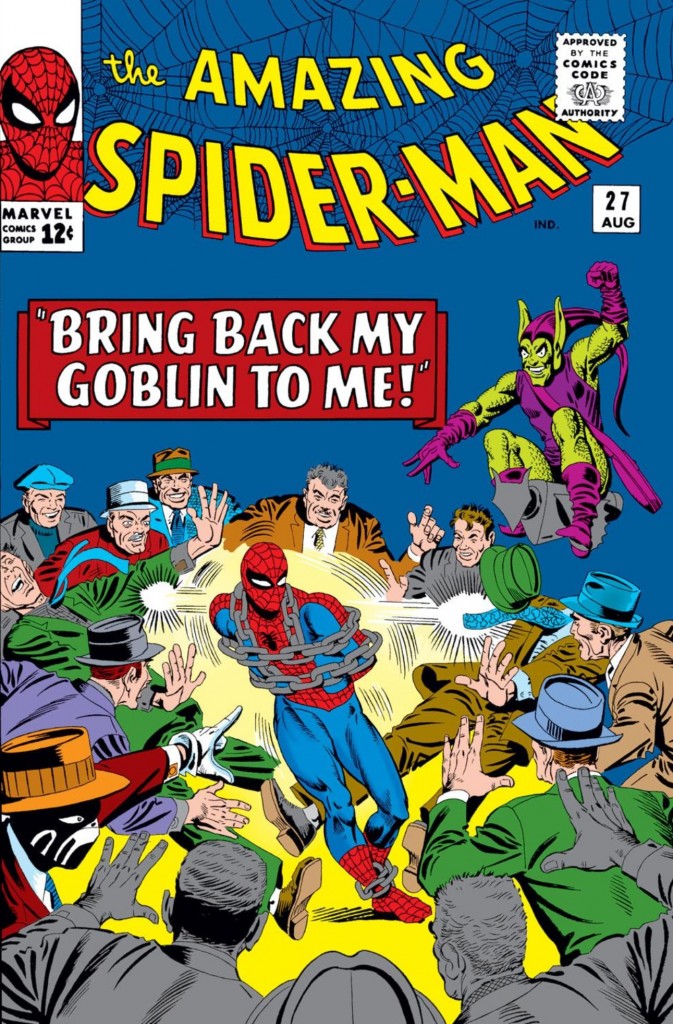
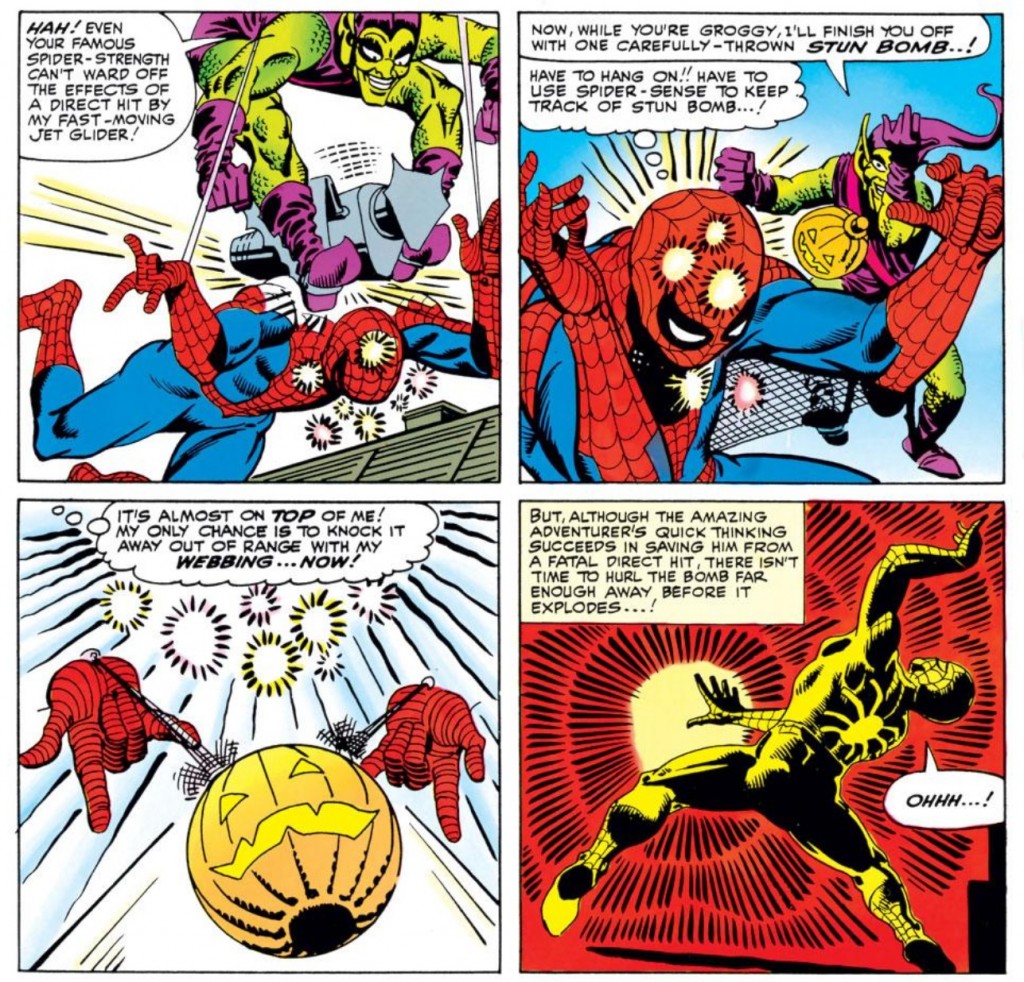
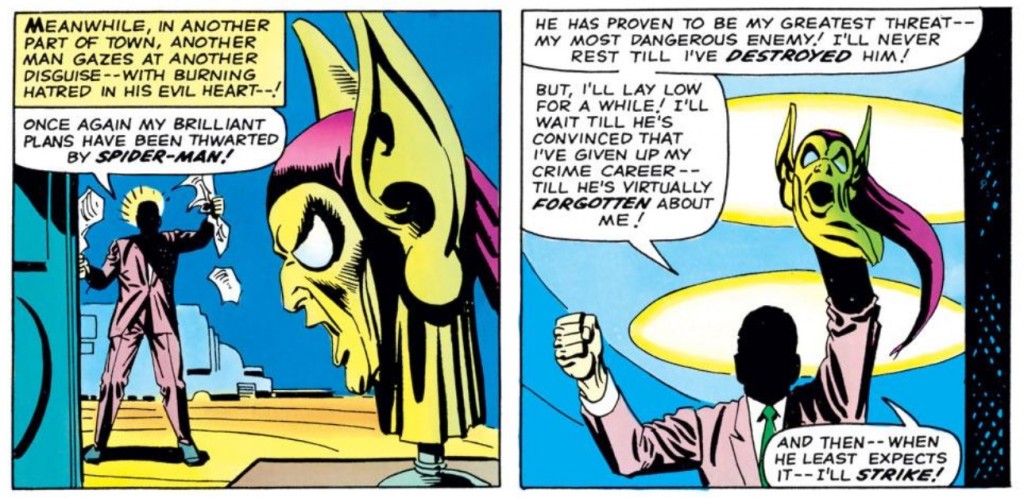
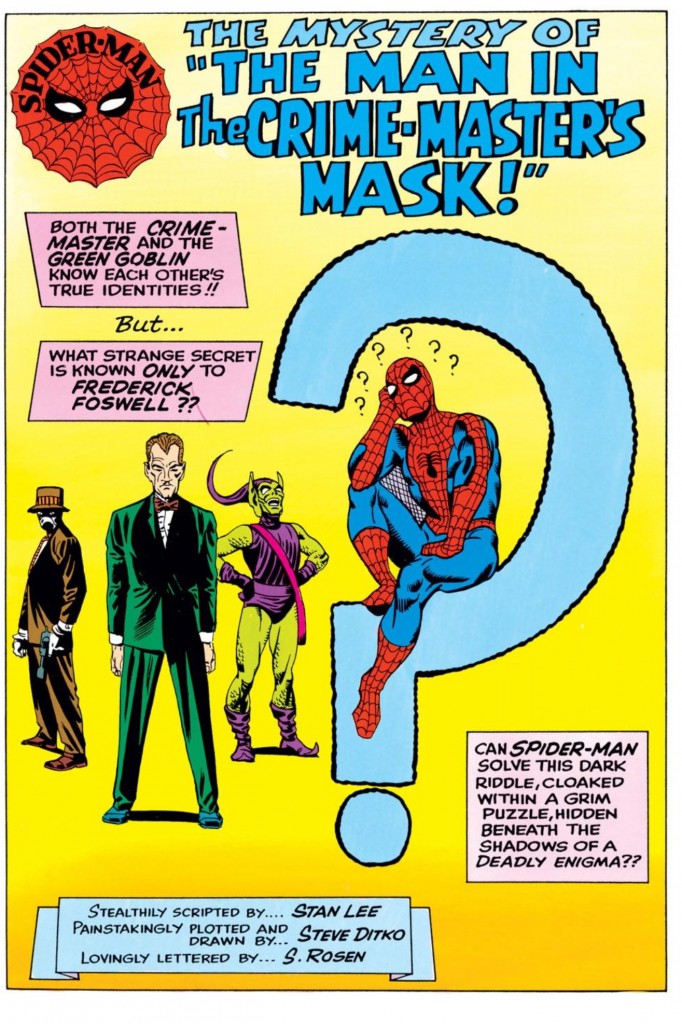
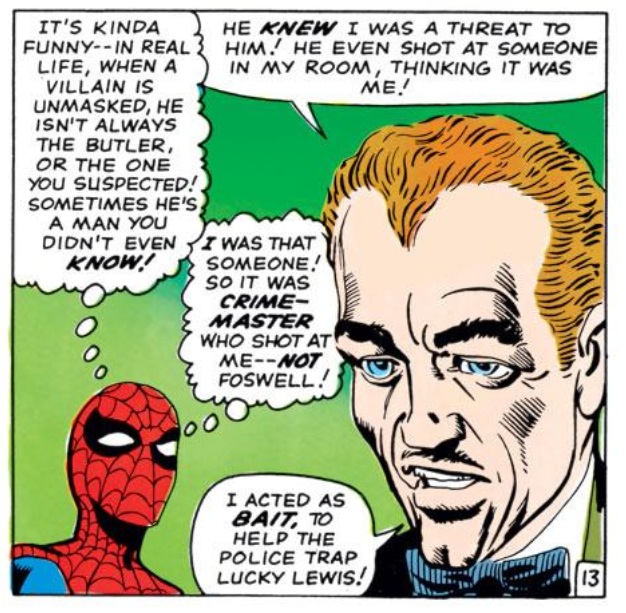
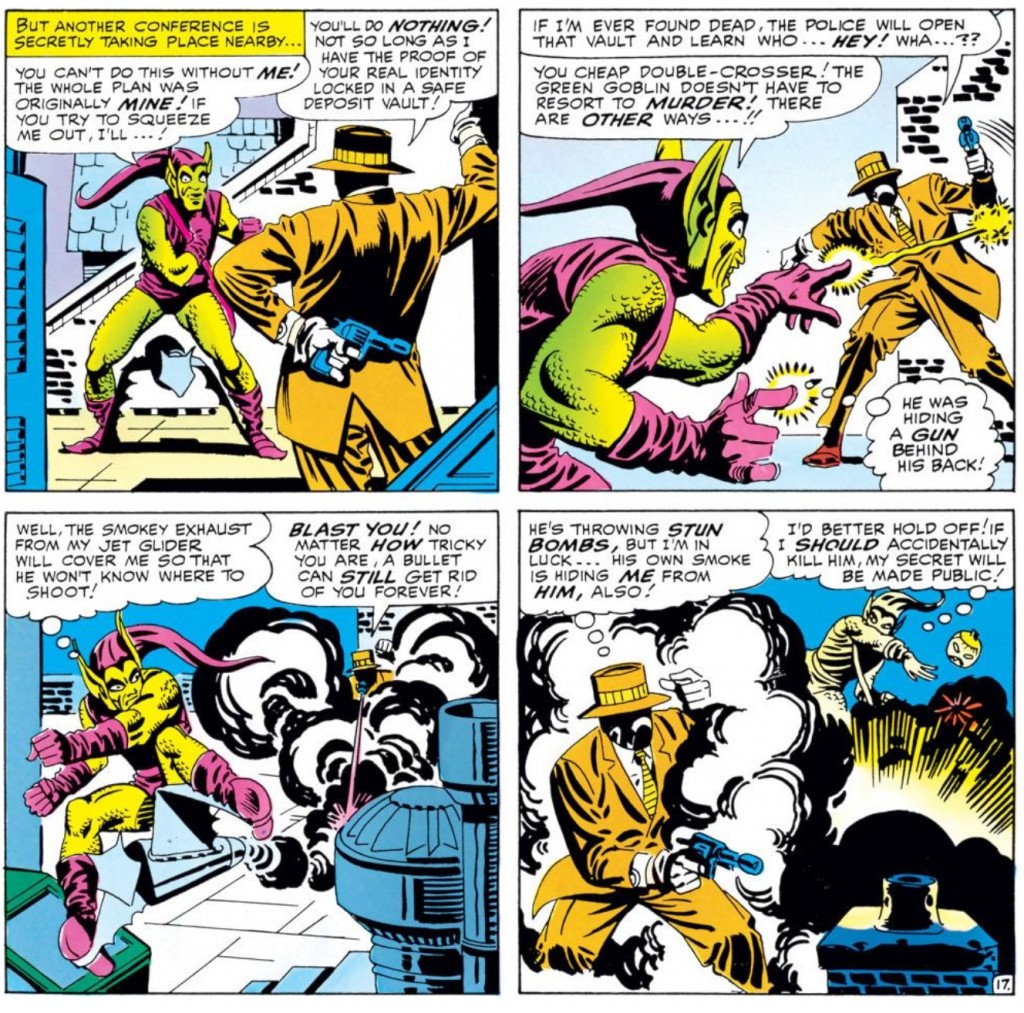
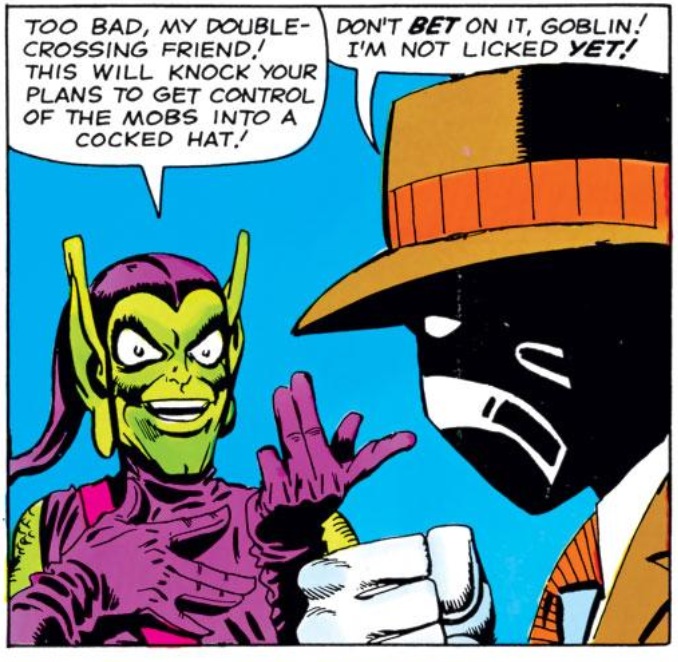
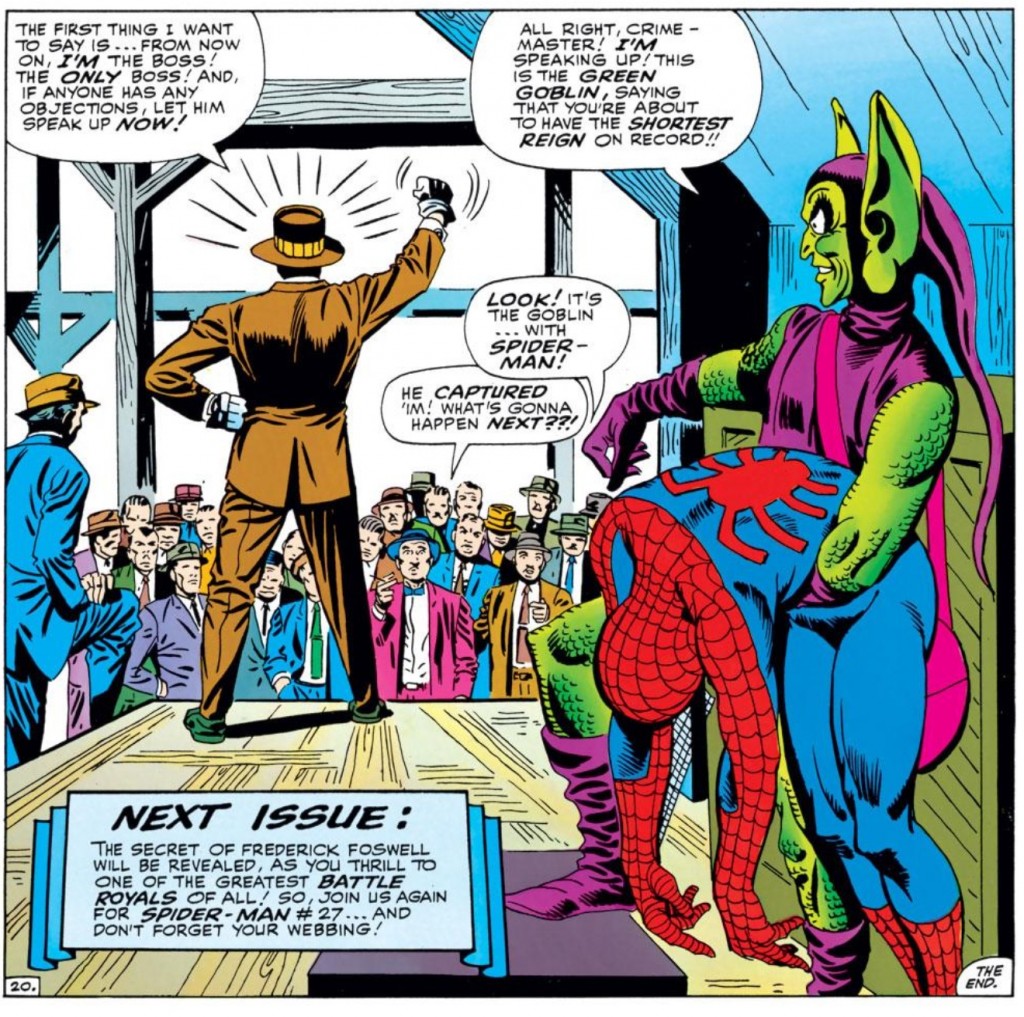



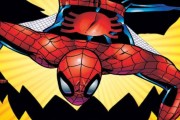
If we’re being completely honest, ambitious mystery villain storylines are probably more trouble than they’re worth in the history of the Spider-Man mythos. The only two I can think of, off the top of my head, that actually worked out as their creators intended were the identities of the Jackal, and more recently Menace.
Beyond that, you’ve got robot parents, FACADE, the Clone Saga, and the ungodly mess that was the Hobgoblin. Not a great batting average.
(And I’d even argue that the execution of the Green Goblin reveal, while entertaining, doesn’t function that well as the reveal of a mystery. Norms was only introduced a few issues prior.)
You make some valid points, but I would just counter all that by pointing out that despite the final punchlines being less than satisfactory on a lot of these, readers truly bought into these mystery sagas. The mystery of the Hobgoblin made him one of the most popular new villains of the 80s. Yes, the reveal was a disaster, but if it creates intrigue and suspense for readers, that’s still a good thing for the industry and the series in which the mystery is being featured. My point about the Green Goblin is that during the Lee/Ditko era, he was the original ambitious mystery, which makes this story very significant because even after revealing Crime-Master and Foswell’s “secrets” the Goblin was still “special” enough to be shrouded in darkness.
Norman Osborn had been introduced, intentionally, by Steve Ditko shortly after the 1st GG story, and showed up as semi-regularly as the Goblin did in later issues, although he wasn’t given a name until shortly before the big reveal. And count me among those who believe Ditko intended for Osborn to be the Goblin all along and entirely discount the notion that Ditko left Marvel over that dispute. Whatever the real reasons for Ditko leaving Marvel, it had nothing to do with the Goblin’s identity.
Anyhow, this was a pretty fun two-parter, particularly with Spidey’s costume problems, although that brings to my mind the question as to how 15 year old Peter had the talent to both design and sew such a complex costume that perfectly fit him. Part of the fantasy element. Another question re this specific story that to my knowledge was never addressed was how was it that if the Crime Master had rigged things so that if he died the Green Goblin’s identity would somehow be released to the public but as it was Norman’s secret was not revealed after the Crime Master was killed. Either C.M. was lying, or G.G. found a way to prevent release of the information — I’d suspect the latter as he during his closing monologue at the end of issue 27 he gives no concern about the possibility of being revealed.